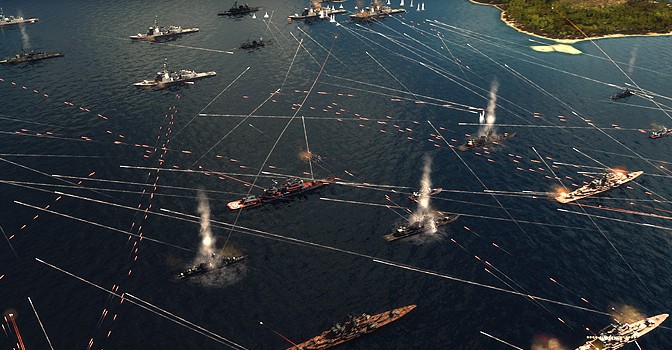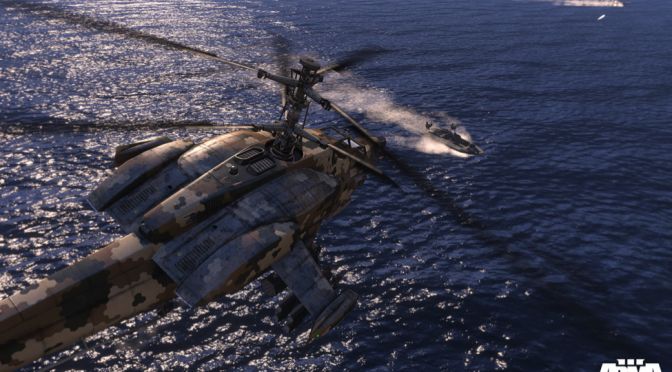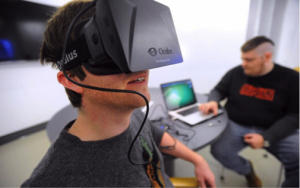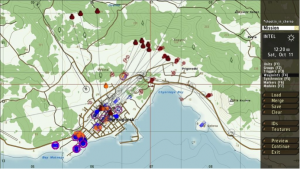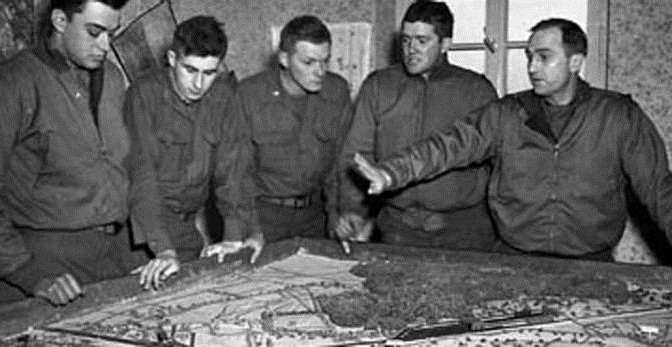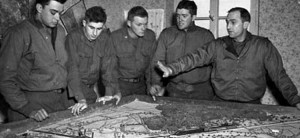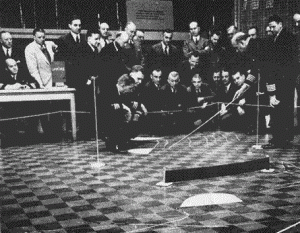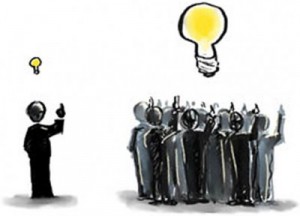Eugen Systems released an heir to World In Conflict with their Real Time Strategy “Wargame” series. Their most recent edition, Red Dragon, occurs in Hong Kong, Korea, Japan, and coastal Russian Far East. The reason we were intruiged is that this new version included naval battles. Now, turns out the naval battles are by no means anything you’d expect for 80’s warships… think more WWII with helicopters, F-18’s, and CIWS… but some of your dear CIMSEC editors and members played and had a pretty good time. It’s hard to argue naval realism when in ground combat you get to pick from several hundred units from 17 countries. Hell, one of the single player campaigns is you defending Hong Kong when Thatcher decides to push continued British presence. Capital!
As the last part of CIMSEC’s Wargames week, we decided that amongst our discussion of exercises and gaming that hone nations for war and war-fighters for survival, we would ask some question to the folks who build games and exercises for fun. The Eugen System team was kind enough to have a chat with us:
Q: What games inspired your team?
A: Our main inspiration for the Wargame series are old strategy games many of us at the studio used to play while younger: the Close Combat & Steel Panther series. One is real-time, the other turn-based, and our goal was to do as good a simulation and “easy to handle, hard to master” as the former, with the latter’s technical database, wide array of nations, huge number of scenarios, …
Q: Unlike many RTS games, Wargame has hundreds of different units–all asymmetric and unique. Through modeling and developing these, has your team come to any conclusions?
A: Well, by modeling so many units, we are highlighting the trend and doctrine of every nation: France’s “speed over armor” attitude, resulting from its tradition of military interventions in Africa ; Britain’s emphasis on armor and range, due to its Cold War allocated battlefield, the North German Plains …
Some of those are well-known to us from the start, but for some less known armies, such doctrine are only revealed after some time, while they are starting to build in our armory.
Q: What did you learn from your last game, Air Land Battle (ALB), that you applied to Red Dragon?
A: ALB’s main influence on RD can be found in map design. There had been some criticisms in the previous installment about maps that were considered too small or too “bottlenecked”. In RD, we have made sure to address this by making bigger and more open maps. Added to that the fact that river or sea and mountain are no longer impassable terrain, and you will see that RD’s maps are much more maneuver-friendly.
We have also taken into consideration many of the UI request to make the armory easier to use, and help new players and non-military buffs more at ease browsing among 1400+ units.
Artillery and air-defense balance were also deeply reworked using ALB’s lessons.
Q: Outside of Naval Warfare, what is the greatest difference between ALB and Red Dragon?
A: Maps. As said above, the new amphibious ability for many vehicles and the fact that mountain are no longer purely impassable gives the game a new feeling. You can maneuver on large scale, always try to outflank your opponent. No bottleneck will make a part of the battlefield secure because you’ve left a defensive force there. RD’s battlefields are much more open that ALB’s were.
Q: After Red Dragon, does the team have the desire to develop an expansion that really fleshes out more urban warfare?
A: We’re not there yet …
Q: What other conflicts have your team considered?
A: Wold War 2 of course …
But WW2 was already covered by many other games, including our own RUSE when we started thinking about Wargame, so we decided to go for something more original, less exploited. Hence why we chose “Cold War gone hot”, which offered the opportunity for many plausible scenarios and provided us with tons of combat vehicles to model and use in-game.
As for other possible Cold War conflicts, after European Escalation, we had considered several battlefields for the next installment: the two most logical were the Northern Front (Scandinavia, which we ended up covering in ALB) and the Southern Front (Mediterranean). We chose the former because Sweden offered a unique roaster of indigenous vehicles, bringing alone more new vehicles than the whole Mediterranean countries together would.
Q: What is your biggest regret with the games?
A: To have left some nations aside, although they could have been included in our previous installment. To make a nation viable, we have to model some 60-80 units, so we can’t add that many nations at a time.
In EE, Dutch and Belgian units had to be left aside, and Finland in ALB. That is not without regret that we have left those nations aside …
Q: What’s your biggest pride with the games?
A: Our biggest pride is when former (or even active!) military servicemen, especially those whom had served during the Cold War, are telling us they are playing our games and are enjoying the realistic feel of it. Then, we allow ourselves to think Wargame lives to what we wanted it to be when we stated the series.
Q: What’s your favorite unit?
A: Personally speaking, I’m fond of wheeled vehicles. I favor speed over armor. Call it national bias, but I think my very favorite one has to be found among the light wheeled tanks/tank destroyers, like the AMX-10 RC, the BTR-70 Z halo or the ERC-90 Sagaie. Had I to choose one, the latter one might be my favorite, for it emphasizes everything I like: speed, stealth, decent firepower, … and looks cool!
Q: What is the most interesting thing you learned from studying the historical background to the game?
A: ABLE ARCHER exercises, in November 1983.
Cold War is often taught or learned at school through different crisis (Cuban Missile Crisis, European Missile Crisis …) and “proxy wars” (Vietnam, Afghanistan, …) but never had we ever heard of how close the year 1983, and especially ABLE ARCHER, had brought us on the verge of WW3. This was completely new to us, and became the nucleus of Wargame: European Escalation’s “alternative scenarios” concept.

